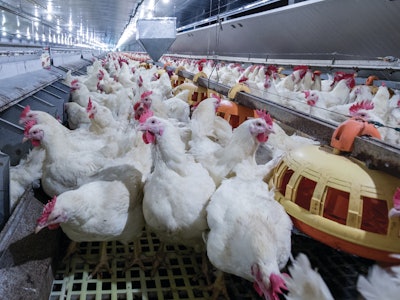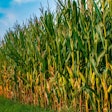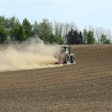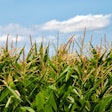
Proper nutrition and balanced diets rich in vitamins and trace minerals and adequate water intake are crucial to optimizing broiler breeder fertility, egg production and hatchability, as well as the quality and quantity of chicks produced.
Prioritizing fertility
When fertility declines, fewer chicks are produced, potentially impacting supply and demand. This has been an ongoing downward trend across the industry for the last several years, according to U.S. Department of Agriculture (USDA) numbers.

There are several management factors that can negatively impact broiler breeder fertility, including housing, management, nutrition and more. Broiler breeder infertility is often attributed to the rooster, although the hen can also play a role. Stress caused by disease, the environment, diet or other factors are common causes of
Uniformity in feed management

In addition, “keeping every male at the right weight really helps to increase the number of completed mating, which increases fertility,” explained Martin Zuidhof, Ph.D., professor, Poultry Systems Modeling and Precision Feeding, Faculty of Agricultural, Life and Environmental Sci-Ag, Food & Nutri Sci Dept, University of Alberta.
Zuidhof created a new precision feeding station system that could help optimize size uniformity among broiler breeders. Each station collects big data using sensors that monitor poultry bodyweight to control and measure feed intake.
Each bird receives a Radio-Frequency Identification (RFID) tag
When the hen lays an egg, the egg weight, time of lay and the hen’s RFID number is automatically recorded, providing comprehensive data on each bird.
Research involving the feeding station system has enhanced broiler breeder fertility by 4-6%, which adds up quickly in large flocks, and a larger door size on newer station models means it can work with both hens and roosters, Zuidhof said.
The feeding station system was originally developed for use in research where it is used to remove confounding body weight variations to standardize studies on the physiological and metabolic mechanisms behind reproductive health.
However, it offers several advantages to commercial producers as well, including the control and monitoring of feed intake and data on nesting and laying behavior in broiler breeders.
Trace mineral considerations
Besides optimizing feed intake, ingredient quality is another critical factor in broiler breeder diets. Whether that ingredient is protein, fat, amino acids, performance trace minerals or vitamins, ingredients should provide consistent nutritional analysis and premium quality.

For producers concerned about feeding oxidized ingredients, they can supplement with feed additives that contain an antioxidant component to combat any negative impacts associated with oxidation and elevated levels of reactive oxygen species. Feed suppliers or company nutritionists can help identify any potentially oxidized sources, he added.
When it comes to differences in dietary needs for hens and roosters, Jasek identified calcium as an important component in hen nutrition for egg formation. In addition to calcium, trace minerals including zinc, manganese and copper play crucial roles in eggshell development in hens and sperm quality in roosters.
Bioavailability is an important factor to consider when it comes to selecting trace minerals and ingredients in broiler breeder diets. Selecting performance trace minerals with better bioavailability increases absorption by the animal, leading to improvements in feed efficiency, production and immunity to maximize profitability.



















